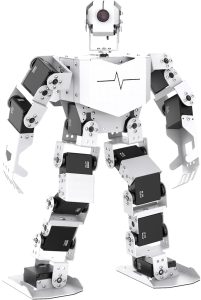Discovering the Unseen: The Story of ‘Olo’, A Color Like No Other

In an age where scientific advancements constantly push the boundaries of what we understand, the discovery of a new color is nothing short of a revelation. Scientists have announced a breakthrough that involves a hue named ‘Olo,’ described as a ‘blue-green of unprecedented saturation.’ The announcement has sparked curiosity and debate among the scientific community, leaving many eager to explore this chromatic marvel.
This color, invisible to the naked eye, emerges thanks to a unique laser device, Oz, which stimulates the retina in ways never before achieved. The development stirs excitement, yet not all experts are convinced by these claims. Some remain skeptical, questioning whether ‘Olo’ truly represents a brand new color or simply an intriguing manipulation of perception.
Breaking Down the Barrier of Color Perception
The discovery of ‘Olo’ challenges our fundamental understanding of color perception. It is not often that we encounter something so profound that it questions the very nature of how we see the world. This new color, which cannot be seen in its truest form naturally, has been a product of scientific experimentation and technological innovation.
Olo is unique as it requires a device to experience. This calls into question centuries of scientific thought about color and perception. While it has fascinated researchers, it is not without its critics. Some argue that this is not so much a new color but a novel way of stimulating existing senses.
The Device Behind the Discovery: Oz
At the heart of this discovery is the device known as Oz, a technological marvel that has enabled scientists to stimulate the retina differently than ever before. Oz uses precise laser technology that can unlock colors outside the typical human experience.
Serving as a testament to human ingenuity, Oz’s technology is fascinating because it doesn’t just reveal new colors; it allows us to re-imagine how we interact with visual stimuli. This kind of invention could redefine visual arts, adding layers of experience previously unimaginable.
The device functions by using specific laser frequencies that make the retina perceive colors in new ways. It offers a glimpse into the future where technology and human senses could merge more seamlessly than ever before.
A Notable Parallel: Holographic Touch Innovations
Meanwhile, scientific breakthroughs aren’t limited to color. Holography has seen significant advancements, notably with the development of FlexiVol, an interactive 3D hologram.
FlexiVol allows users to interact with holographic objects using their bare hands, essentially bringing sci-fi dreams to life. Its technology could change digital interactions, providing a tactile experience with virtual objects.
Its potential is vast, potentially influencing various fields, from entertainment to education, by offering new ways to engage with content. FlexiVol represents how far we’ve come in merging reality with digital experiences.
The Debate on Authenticity
As revolutionary as the discovery of ‘Olo’ may sound, it is not without its detractors. There are scholars and researchers who remain unconvinced about its novelty.
Some believe the color simply reflects an enhanced perception of existing hues rather than an entirely new addition to the spectrum.
The skepticism highlights a broader debate in science about what truly constitutes something new versus an extension of existing knowledge. Regardless, the discussions have captivated audiences and kept scientific rooms buzzing.
The essence of the debate lies in what defines a discovery. Is ‘Olo’ a sign of groundbreaking exploration or a mere manipulation of perception? This question may take years to fully answer.
Innovation Extending to Sound: The Artificial Composer
Beyond visual advancements, technological progress has also introduced new dimensions to sound and music. In Australia, an artificial ‘brain’ has resurrected a musician’s compositions years after his passing.
This musical innovation uses lab-grown brain organoids created from composer Alvin Lucier’s cells, generating complex sounds that fill an entire space with resonance.
Such breakthroughs beg questions about creativity and our understanding of consciousness, blurring lines between the alive and the created.
These brain-based compositions redefine what’s possible with sound, and they present new ethical and philosophical questions about the future of artistic creation.
A Glimpse into the Past: Gladiators and Big Cats
In a completely different field, archaeology provides insights into human history with the discovery of a gladiator’s skeleton bearing marks from a big cat.
This finding serves as the first physical evidence of Roman gladiators battling wild animals, confirming long-held historical narratives.
Archaeologists now have tangible proof that aligns with centuries of storytelling and art, enriching our understanding of Roman entertainment and violence.
Each piece of evidence adds a new layer to the history of human-animal interaction, and one skeleton can reveal stories untold for millennia.
Pushing the Limits of Technology: The Fastest Memory Device
In the world of technology, Chinese scientists have pushed the limits with PoX, the fastest memory device ever created.
This device writes data at an unimaginable speed, which is 10,000 times faster than current technology.
It combines the best of RAM and flash memory, promising to eliminate current bottlenecks in computing capabilities and enhance artificial intelligence.
PoX is a clear indicator that technological progress is relentless, continually redefining what we believe is possible in data processing.
Technological Innovations in Everyday Life
Innovations don’t stop with high-end technology. Everyday devices like indoor gardens are transforming home environments.
One such example is Plantaform, a smart garden that thrives using fog, offering a fresh and sustainable solution for growing herbs and vegetables indoors.
These everyday innovations extend to health and convenience, demonstrating that technology isn’t just reshaping industries but also lives.
Such devices show how everyday life can be enriched by integrating simple yet effective technological solutions.
Finding Emotion in Technology
The fusion of human emotion and technology is being explored actively, as seen with new devices that can detect genuine emotions.
Penn State’s development of a stretchable sensor can see through emotional facades, potentially aiding mental health assessments.
The device interprets physiological cues to distinguish between real and masked emotions, opening new avenues for understanding human feelings.
As technology learns more about how we express emotions, it brings promise of new supports for mental health care.
The discovery of ‘Olo’ is a mark of human curiosity and innovation, reimagining our understanding of what can be seen and felt. While debates continue, the journey of exploring new frontiers remains an inspiring testament to science’s unending quest. The advancements in color, sound, and everyday technology paint a vivid picture of a future driven by endless possibilities.





